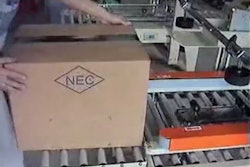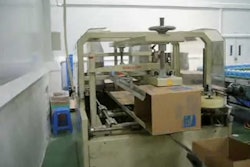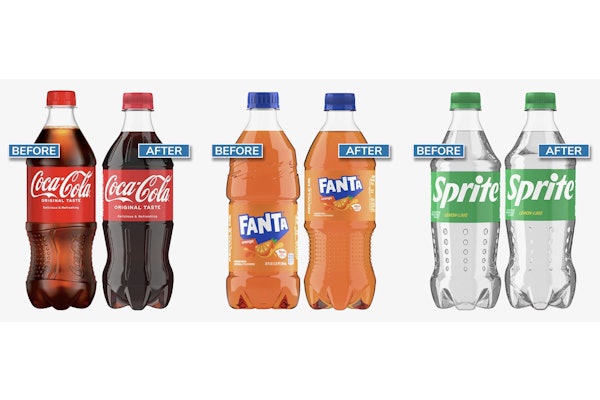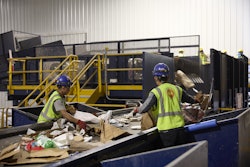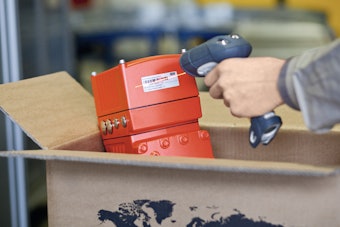
Why is consumer product packaging still viewed by many as a billboard? For its primary purpose, to stand out on the retail shelf with bold graphics and brand color? For its reason for being, to contain product? Or, to entice the consumer to pick it up and purchase it rather than competitors’ products in crowded retail environments?
It’s time to change this prevalent thinking. Packaging as a billboard is yesterday’s idea. Today, we need to think beyond packaging as advertising space. Yes, it is essential to get, and keep, consumers’ attention in retail environments. It’s also true that packaging has to refer back to the brand and communicate that brand’s unique attributes. But does it really have to shout to do that? Or, is it better to whisper? In the midst of the chaotic din at retail, what are consumers more likely to notice?
Here’s my point: Consumers are far more sophisticated now, and they are looking for something they can relate to. That something is packaging that is so well-designed that consumers want to interact with the brand it represents over and over again. Rather than containing mundane products consumers need to use, consumer packaging can deliver something so extraordinary that it adds enjoyment and pleasure. In this scenario, the package becomes a value-added perception for everyday items—so much so that it never gets tucked away.
Rethinking package design can lead to an all-important Second Moment of Truth (SMOT) with consumers—when they interact with the product. Adding a new aesthetic to functionality can bring success at the SMOT.
For many consumer product companies, the emphasis rightfully is on product innovation, sales, and marketing. Yet, a key element is missing. That element is design.
Design really should be the overall driving force in consumer product companies. A few companies have taken this idea and made it reality, enjoying great success. Think: Apple. It’s readily apparent that Apple has a top-down design philosophy. It works well since the company also has a bottom-up consumer-centric focus. The two work in tandem. Apple puts the consumer first and then works to design great user experiences.
With design-oriented thinking, stunning new products and new categories have been made possible. Products, product packaging, marketing, and customer service are so well-designed, seamless, congruous and unique—they elicit the “wow” factor from jaded consumers. iPod. iPhone. We can only anticipate what’s coming next!
Embracing design and integrating it into marketing, information technology, R&D, manufacturing, sales, and customer care departments is a challenge that requires courage. Yet, every corporate employee can and should be integrated into the design process. Not all of them are involved in the actual design of products, services, or packaging. But they are all involved in designing the customer’s overall experience in one way or another. Think of every department within the corporate structure as being in the design business.
Some of the most successful consumer product companies in the world have a design-centric philosophy. They include IKEA, Williams-Sonoma, Nintendo, and Disney. Other organizations, including Procter & Gamble, have come to the party more recently. Since taking over as CEO at P&G, Alan Lafley has worked steadily to incorporate design across the entire company. Lafley has stated: “We want to design the purchasing experience. … We want to design every component of the product, and we want to design the communication experience and the user experience. I mean, it’s all design.”
Lafley then named P&G marketing veteran Claudia Kotchka as his first Vice President for Design Innovation and Strategy. Kotchka promptly began changing P&G into what she described as “a design-centric culture”. It’s no small feat to integrate right-brained design thinking into left-brained management personnel—especially in an organization with a long-ingrained mind-set and practices—but that’s exactly what Kotchka did.
She also fearlessly integrated inside design staff with outside design consultants to produce the best results possible. As she prepares to retire, expect her successor to pick up where Kotchka leaves off.
The payoff of design-centricity? The emergence of new product innovations, new categories—and even new brands. Consider Swiffer, Febreze, and Crest Whitestrips. As these brands broke new ground, they weren’t sent out into the world without paying attention to the experiential and design aspects of their brands, and they’ve been tweaked as they’ve gone along.
When Febreze first hit store shelves, it had P&G’s enormous retail and advertising clout. But after consumers used it for a while, the fabric odor eater wasn’t being used as often as P&G would have liked. Hence, a sales slowdown.
Being customer-experience-oriented, P&G marketers realized that consumers were using Febreze in experimental ways in their homes. As a result, Febreze air fresheners, plug-ins, candles, and ingenious pairings with other P&G detergents and household cleaners came about. Febreze is now poised to become a billion-dollar brand for P&G.
Now, P&G has leveraged its design-forward mentality to launch the Febreze Décor Collection to rave reviews. Stylish, clear packaging, with beautiful botanical or raindrop graphics, makes the latest Febreze line extensions stand out on shelves. Fresh aromatherapy scents are captured beautifully in soft graphics that whisper to consumers.
There are no billboards here. In laundry-care aisles packed with splashy, bold, and primary-colored billboard packaging, the Febreze Décor Collection is, literally, a breath of fresh air. It’s easy to spot on shelves, and it connects quickly with consumers. The threshold for the First Moment of Truth—when the consumer chooses the product—is easily met here.
The clear intention? To take Febreze products out of cupboards or closets, enabling consumers to openly display the beautifully designed containers in their homes. The Décor Collection Web page unabashedly states: “Shameless display of freshness” and “Now uplifting freshness is always within reach.” How brilliant is this?
There is no “out of sight, out of mind” where these products are concerned. The consumer’s SMOT is fully engaged here. With a product this beautifully displayed, Febreze provides visual enjoyment. Better yet, it will be picked up and used with far more frequency than ever before, hence, faster repeat purchases.
If more consumer product companies were to start thinking in terms of designing the overall customer experience, and rethinking package design like this, they would deliver their brands in the most engaging manner.
Accomplishing this may take an outside-in, rather than inside-out, perspective. Brand managers might benefit from working more with outside design consultants who can bring fresh insights to the table—preferably, outside design talent that can work seamlessly with internal design departments. But the result of collaboration can be great. Just ask P&G.
It’s time to change this prevalent thinking. Packaging as a billboard is yesterday’s idea. Today, we need to think beyond packaging as advertising space. Yes, it is essential to get, and keep, consumers’ attention in retail environments. It’s also true that packaging has to refer back to the brand and communicate that brand’s unique attributes. But does it really have to shout to do that? Or, is it better to whisper? In the midst of the chaotic din at retail, what are consumers more likely to notice?
Here’s my point: Consumers are far more sophisticated now, and they are looking for something they can relate to. That something is packaging that is so well-designed that consumers want to interact with the brand it represents over and over again. Rather than containing mundane products consumers need to use, consumer packaging can deliver something so extraordinary that it adds enjoyment and pleasure. In this scenario, the package becomes a value-added perception for everyday items—so much so that it never gets tucked away.
Rethinking package design can lead to an all-important Second Moment of Truth (SMOT) with consumers—when they interact with the product. Adding a new aesthetic to functionality can bring success at the SMOT.
For many consumer product companies, the emphasis rightfully is on product innovation, sales, and marketing. Yet, a key element is missing. That element is design.
Design really should be the overall driving force in consumer product companies. A few companies have taken this idea and made it reality, enjoying great success. Think: Apple. It’s readily apparent that Apple has a top-down design philosophy. It works well since the company also has a bottom-up consumer-centric focus. The two work in tandem. Apple puts the consumer first and then works to design great user experiences.
With design-oriented thinking, stunning new products and new categories have been made possible. Products, product packaging, marketing, and customer service are so well-designed, seamless, congruous and unique—they elicit the “wow” factor from jaded consumers. iPod. iPhone. We can only anticipate what’s coming next!
Embracing design and integrating it into marketing, information technology, R&D, manufacturing, sales, and customer care departments is a challenge that requires courage. Yet, every corporate employee can and should be integrated into the design process. Not all of them are involved in the actual design of products, services, or packaging. But they are all involved in designing the customer’s overall experience in one way or another. Think of every department within the corporate structure as being in the design business.
Some of the most successful consumer product companies in the world have a design-centric philosophy. They include IKEA, Williams-Sonoma, Nintendo, and Disney. Other organizations, including Procter & Gamble, have come to the party more recently. Since taking over as CEO at P&G, Alan Lafley has worked steadily to incorporate design across the entire company. Lafley has stated: “We want to design the purchasing experience. … We want to design every component of the product, and we want to design the communication experience and the user experience. I mean, it’s all design.”
Lafley then named P&G marketing veteran Claudia Kotchka as his first Vice President for Design Innovation and Strategy. Kotchka promptly began changing P&G into what she described as “a design-centric culture”. It’s no small feat to integrate right-brained design thinking into left-brained management personnel—especially in an organization with a long-ingrained mind-set and practices—but that’s exactly what Kotchka did.
She also fearlessly integrated inside design staff with outside design consultants to produce the best results possible. As she prepares to retire, expect her successor to pick up where Kotchka leaves off.
The payoff of design-centricity? The emergence of new product innovations, new categories—and even new brands. Consider Swiffer, Febreze, and Crest Whitestrips. As these brands broke new ground, they weren’t sent out into the world without paying attention to the experiential and design aspects of their brands, and they’ve been tweaked as they’ve gone along.
When Febreze first hit store shelves, it had P&G’s enormous retail and advertising clout. But after consumers used it for a while, the fabric odor eater wasn’t being used as often as P&G would have liked. Hence, a sales slowdown.
Being customer-experience-oriented, P&G marketers realized that consumers were using Febreze in experimental ways in their homes. As a result, Febreze air fresheners, plug-ins, candles, and ingenious pairings with other P&G detergents and household cleaners came about. Febreze is now poised to become a billion-dollar brand for P&G.
Now, P&G has leveraged its design-forward mentality to launch the Febreze Décor Collection to rave reviews. Stylish, clear packaging, with beautiful botanical or raindrop graphics, makes the latest Febreze line extensions stand out on shelves. Fresh aromatherapy scents are captured beautifully in soft graphics that whisper to consumers.
There are no billboards here. In laundry-care aisles packed with splashy, bold, and primary-colored billboard packaging, the Febreze Décor Collection is, literally, a breath of fresh air. It’s easy to spot on shelves, and it connects quickly with consumers. The threshold for the First Moment of Truth—when the consumer chooses the product—is easily met here.
The clear intention? To take Febreze products out of cupboards or closets, enabling consumers to openly display the beautifully designed containers in their homes. The Décor Collection Web page unabashedly states: “Shameless display of freshness” and “Now uplifting freshness is always within reach.” How brilliant is this?
There is no “out of sight, out of mind” where these products are concerned. The consumer’s SMOT is fully engaged here. With a product this beautifully displayed, Febreze provides visual enjoyment. Better yet, it will be picked up and used with far more frequency than ever before, hence, faster repeat purchases.
If more consumer product companies were to start thinking in terms of designing the overall customer experience, and rethinking package design like this, they would deliver their brands in the most engaging manner.
Accomplishing this may take an outside-in, rather than inside-out, perspective. Brand managers might benefit from working more with outside design consultants who can bring fresh insights to the table—preferably, outside design talent that can work seamlessly with internal design departments. But the result of collaboration can be great. Just ask P&G.



